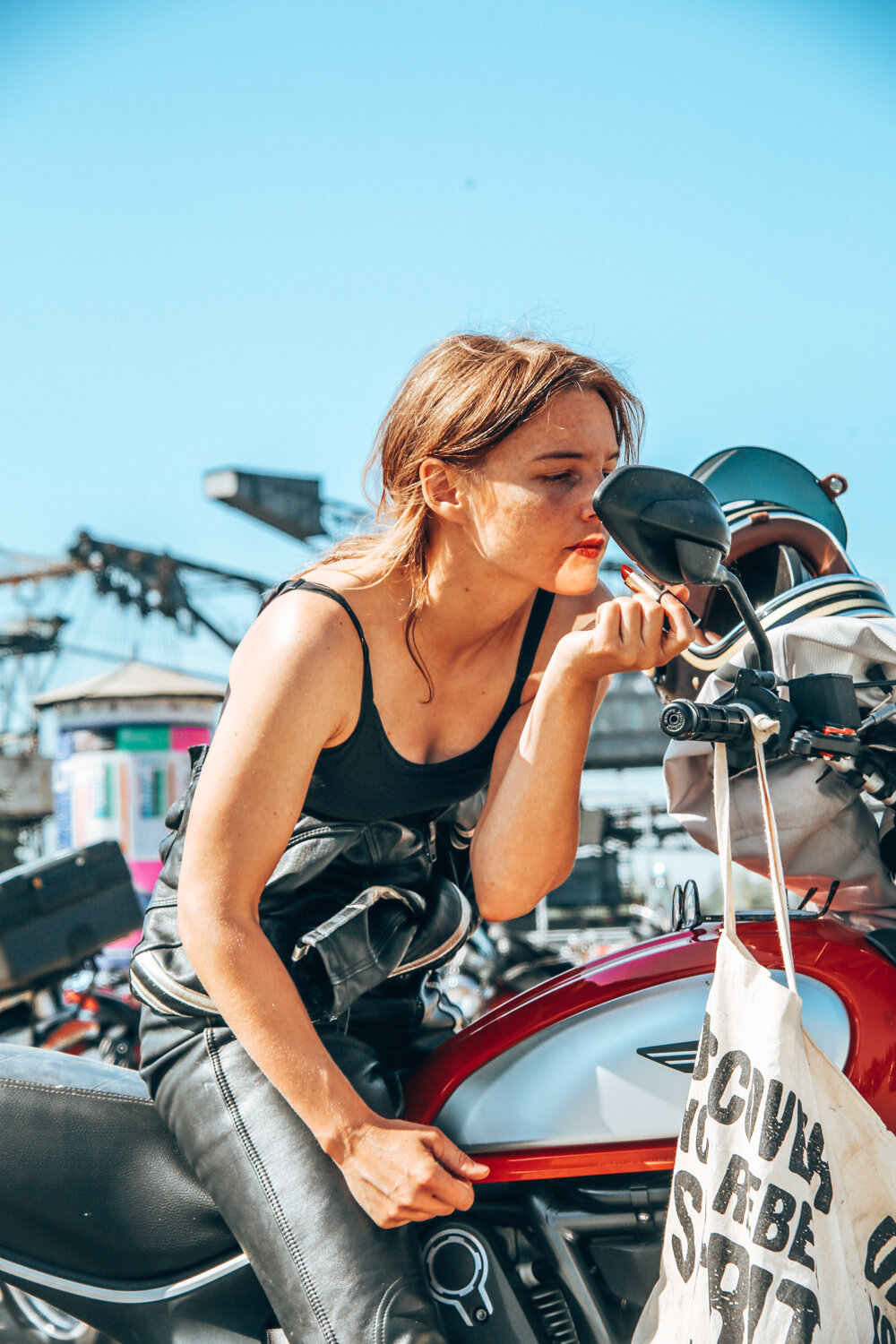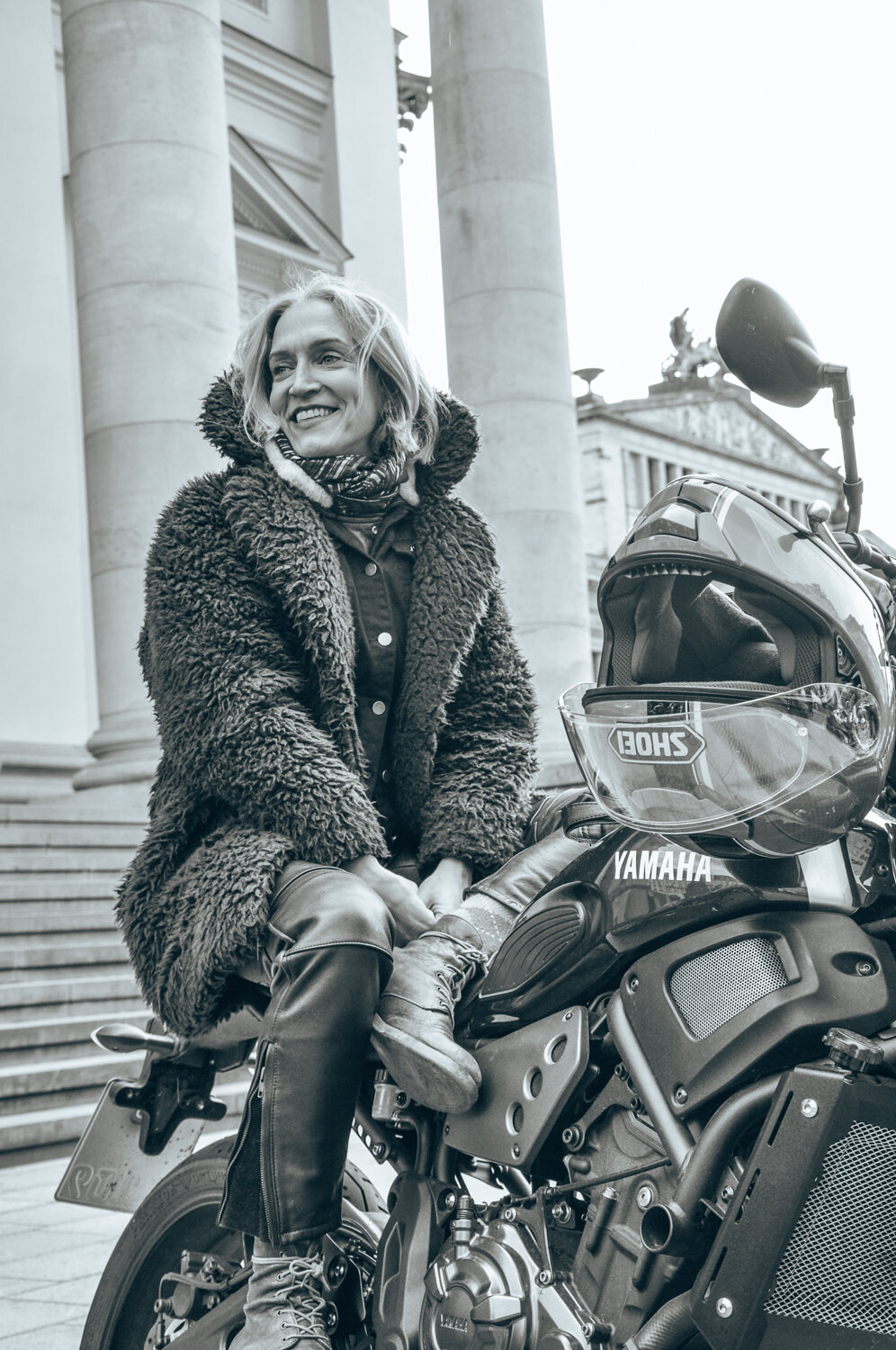Alice Connew - Featured Portfolio
Alice Connew
Petrolettes (2020)
Essay by Melanie Oliver for PhotoForum, 16 August 2020
Alice Connew completed a BFA at Ilam School of Fine Arts in 2010. Since then she has been based in Berlin, where she lives and works as a freelance photographer and sometimes graphic designer. She is also co-founder of GLORIA Books, a publishing collective that focuses on art and photography books. Her recent photobook Still Looking Good was a finalist in the 2019 Australia and New Zealand Photobook of the Year awards and listed as one of the best Antipodean Photobooks 2019.
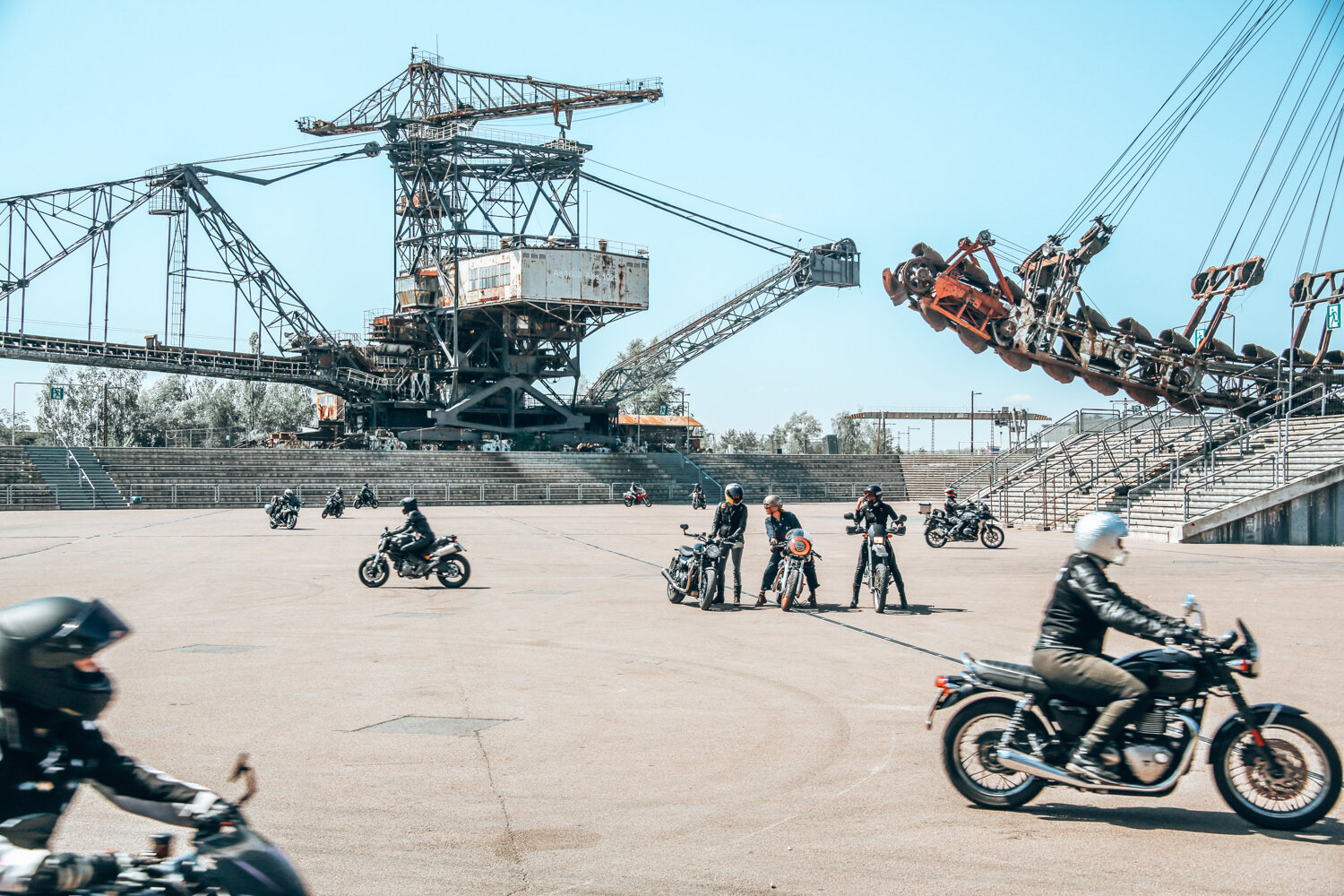
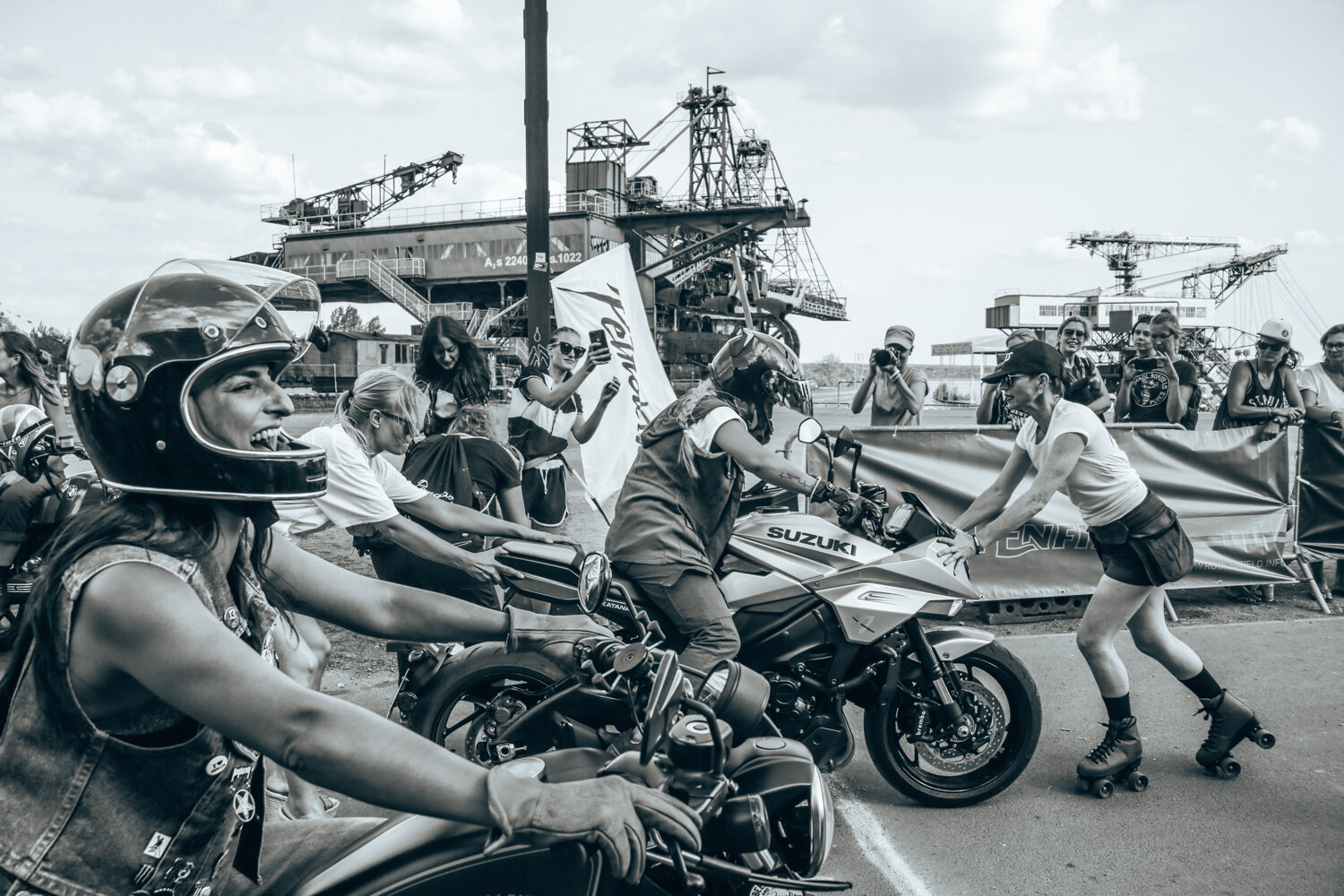
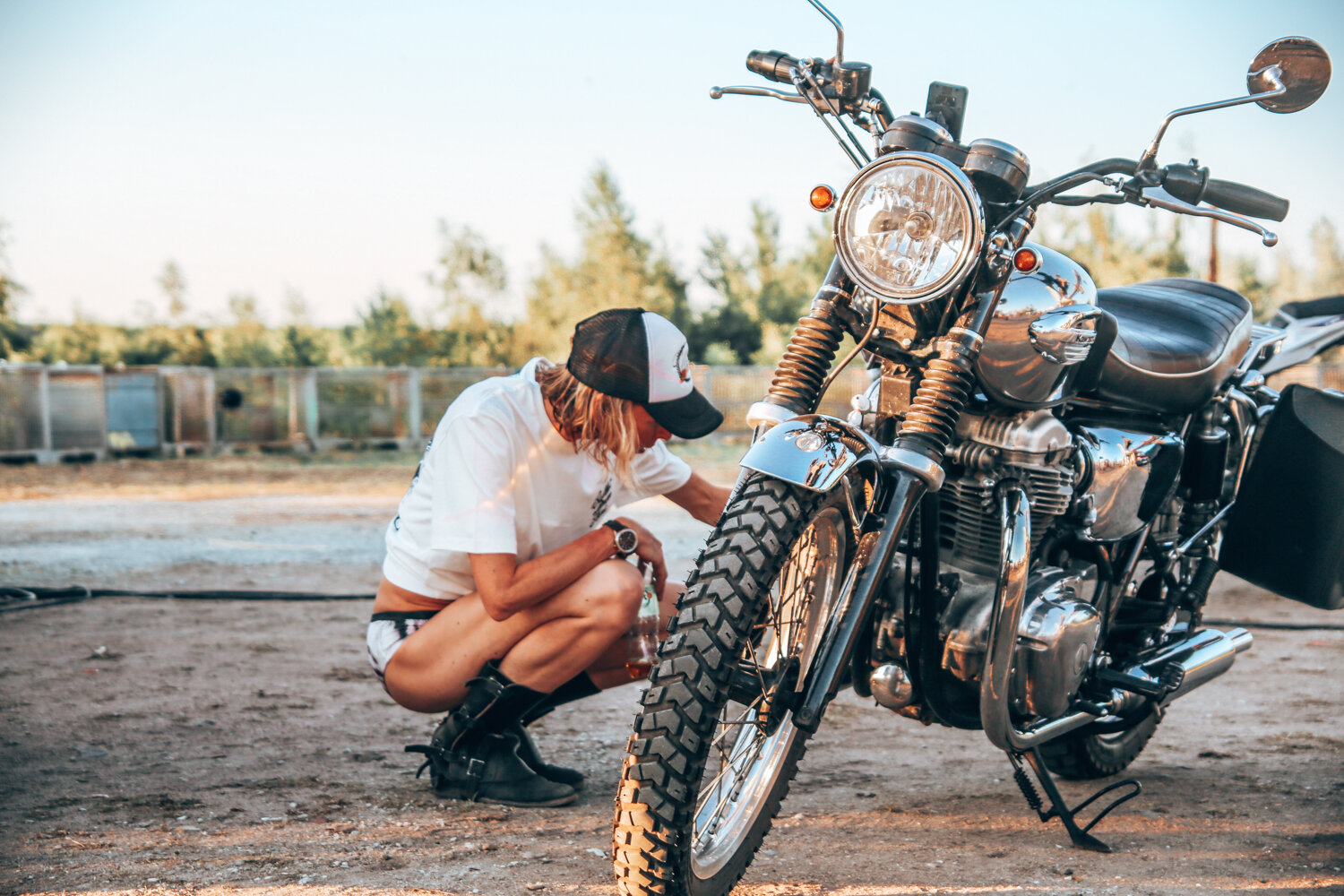
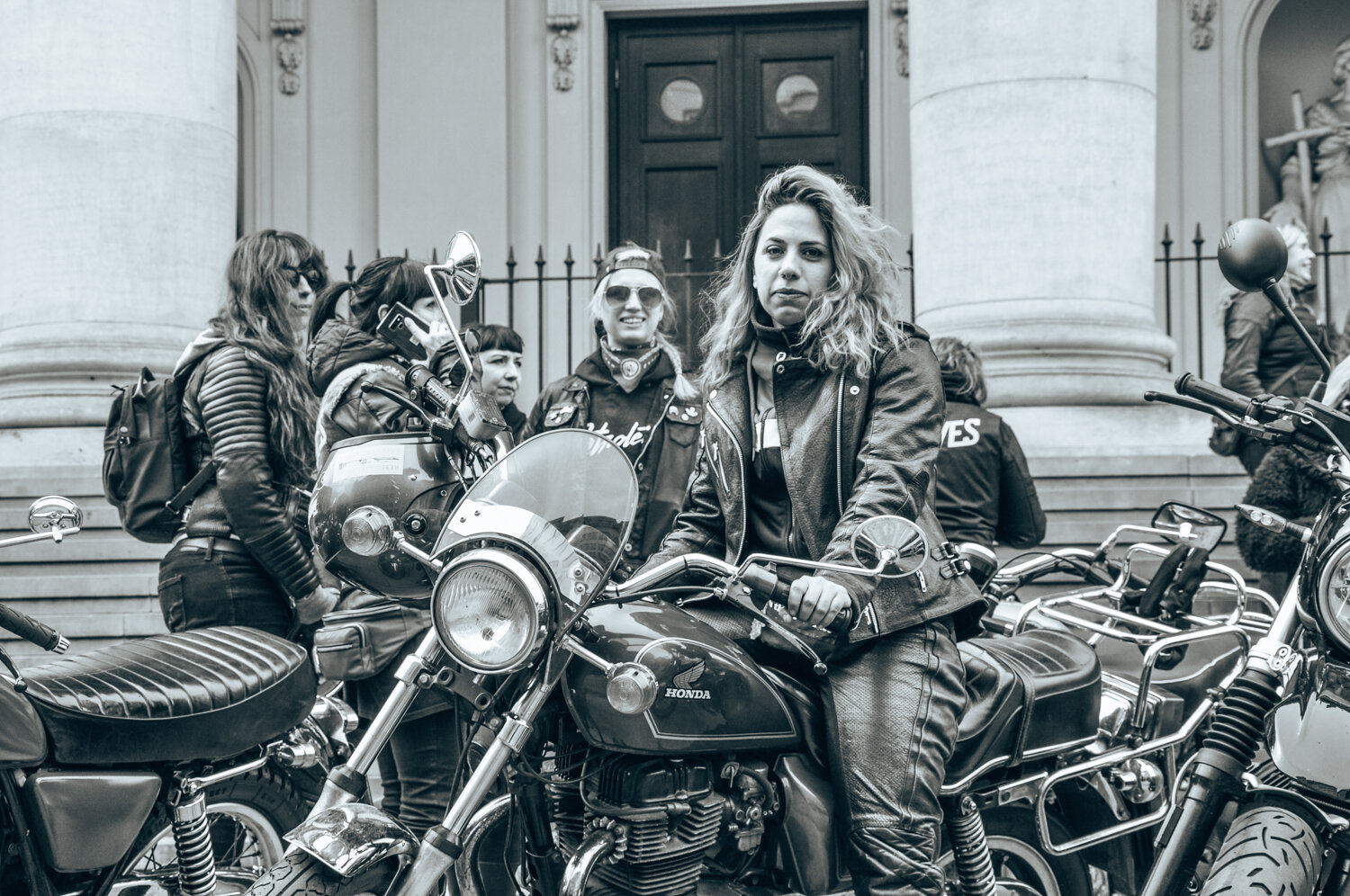
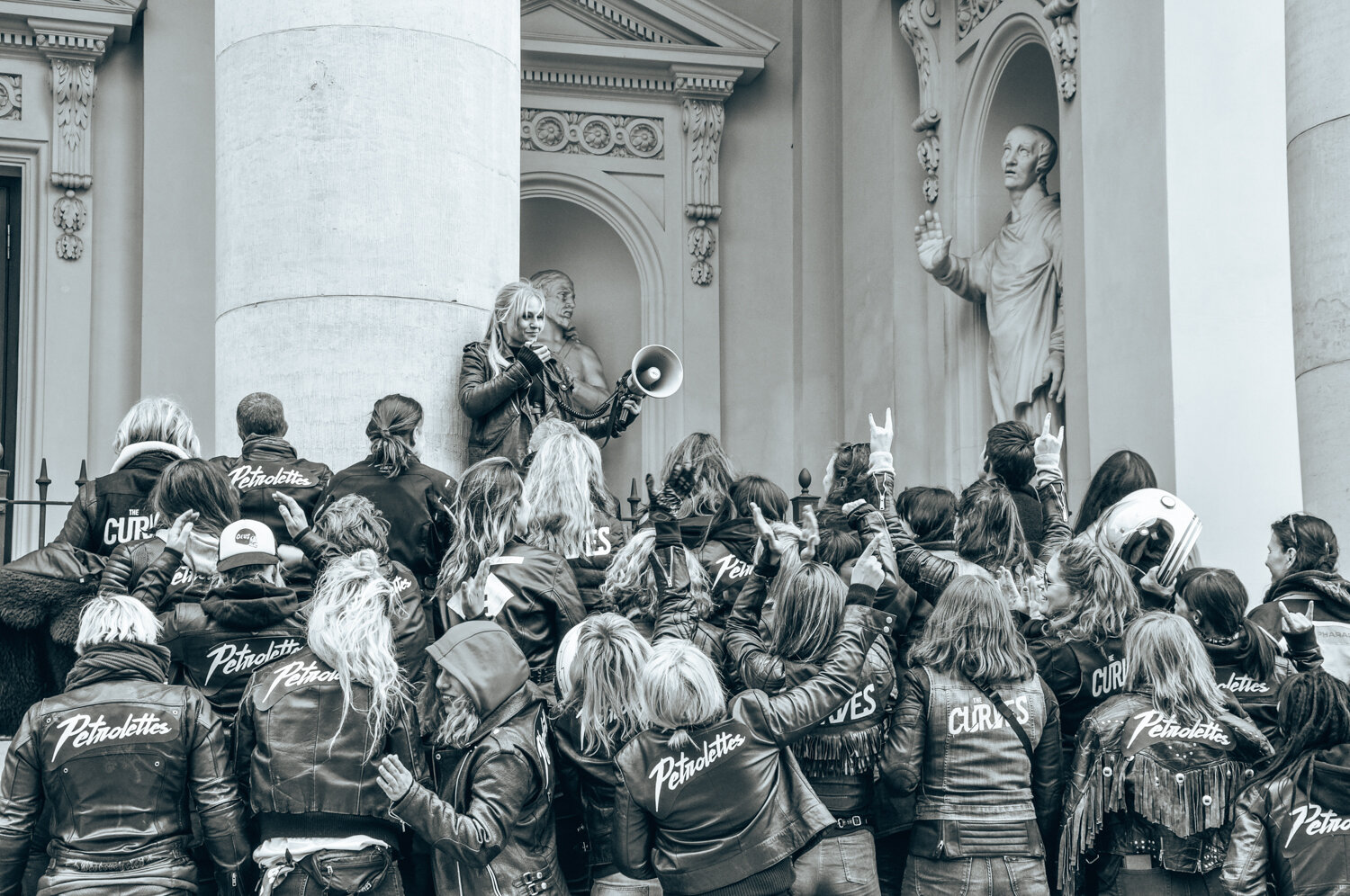
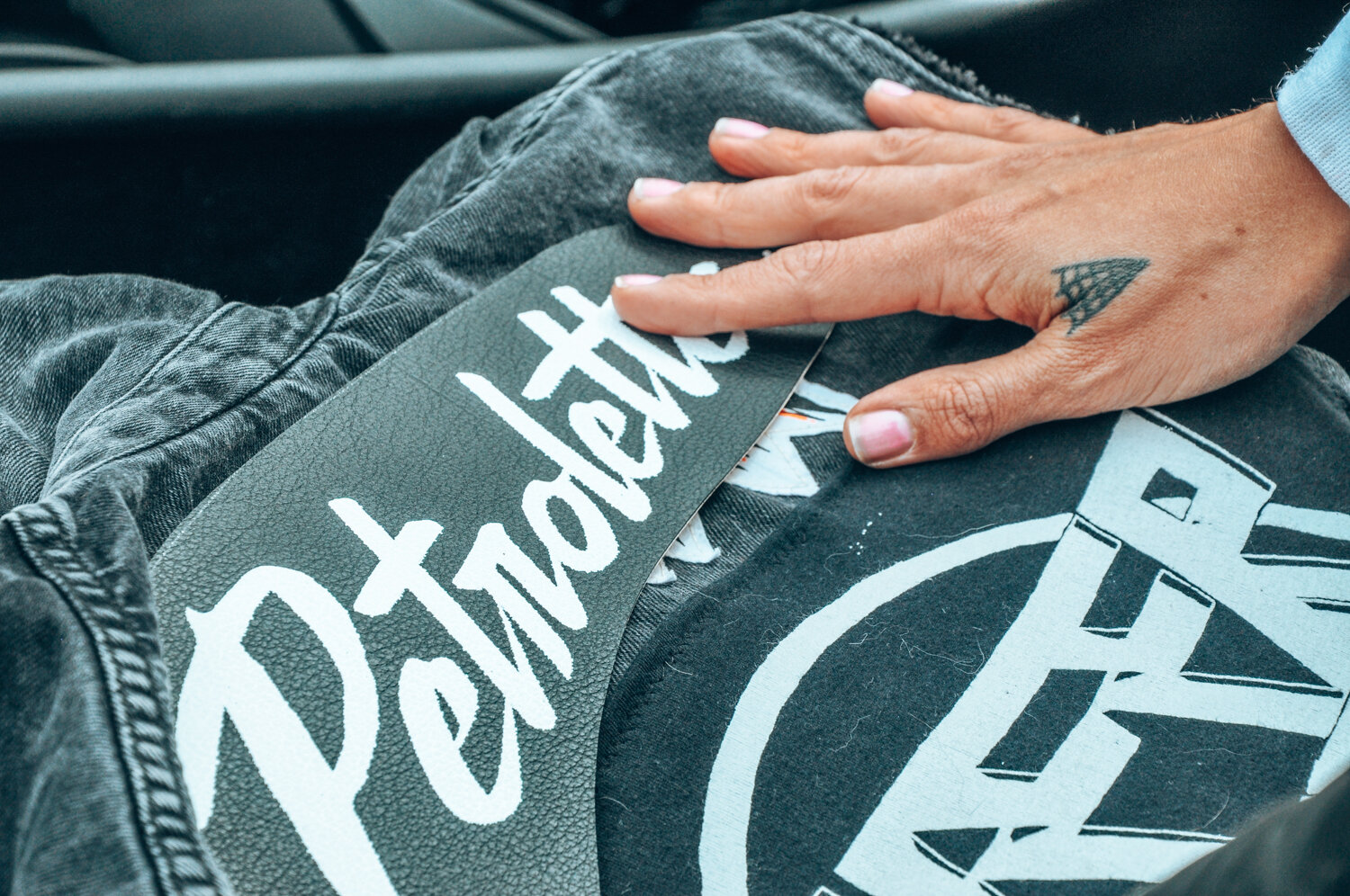
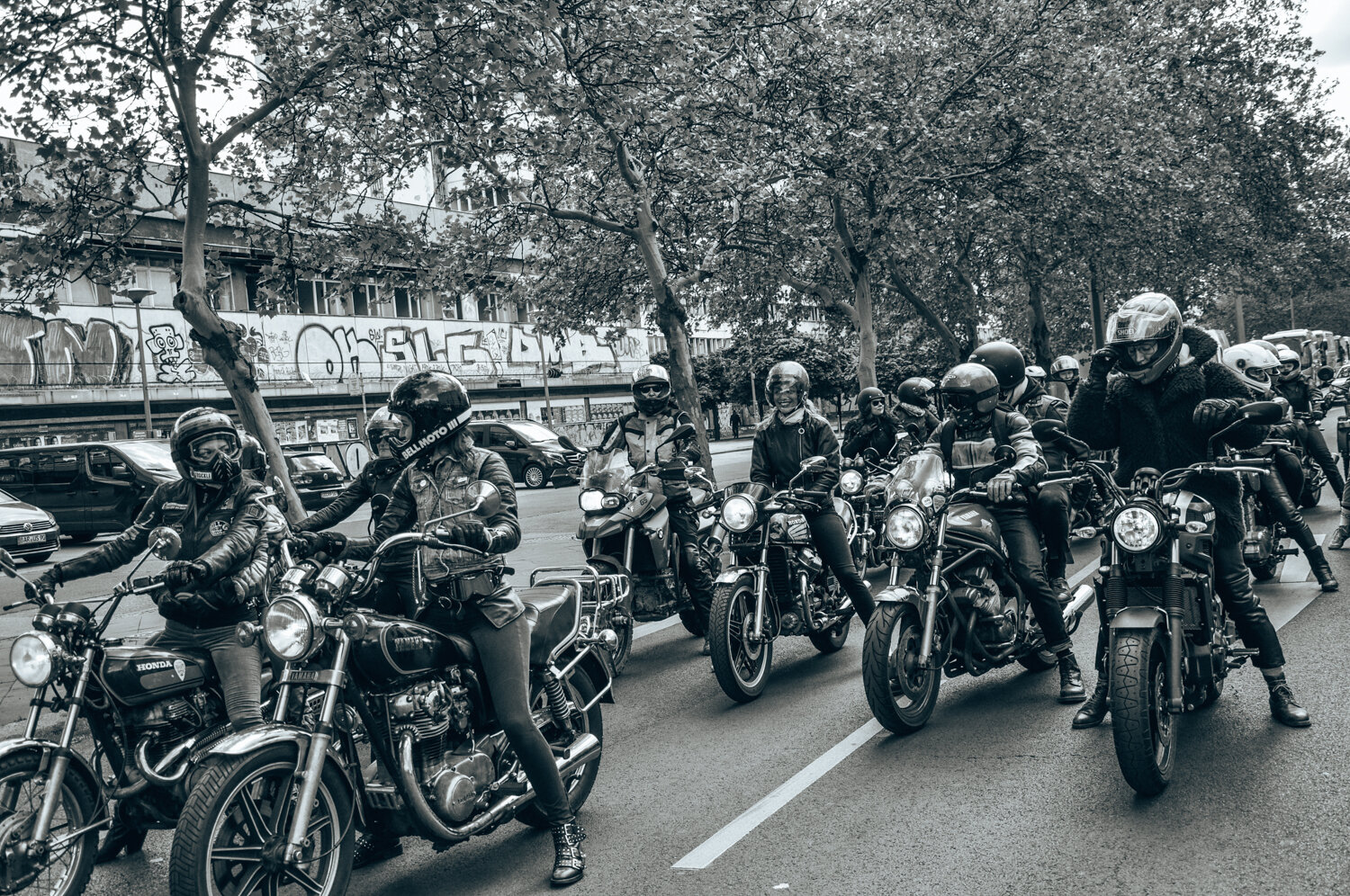
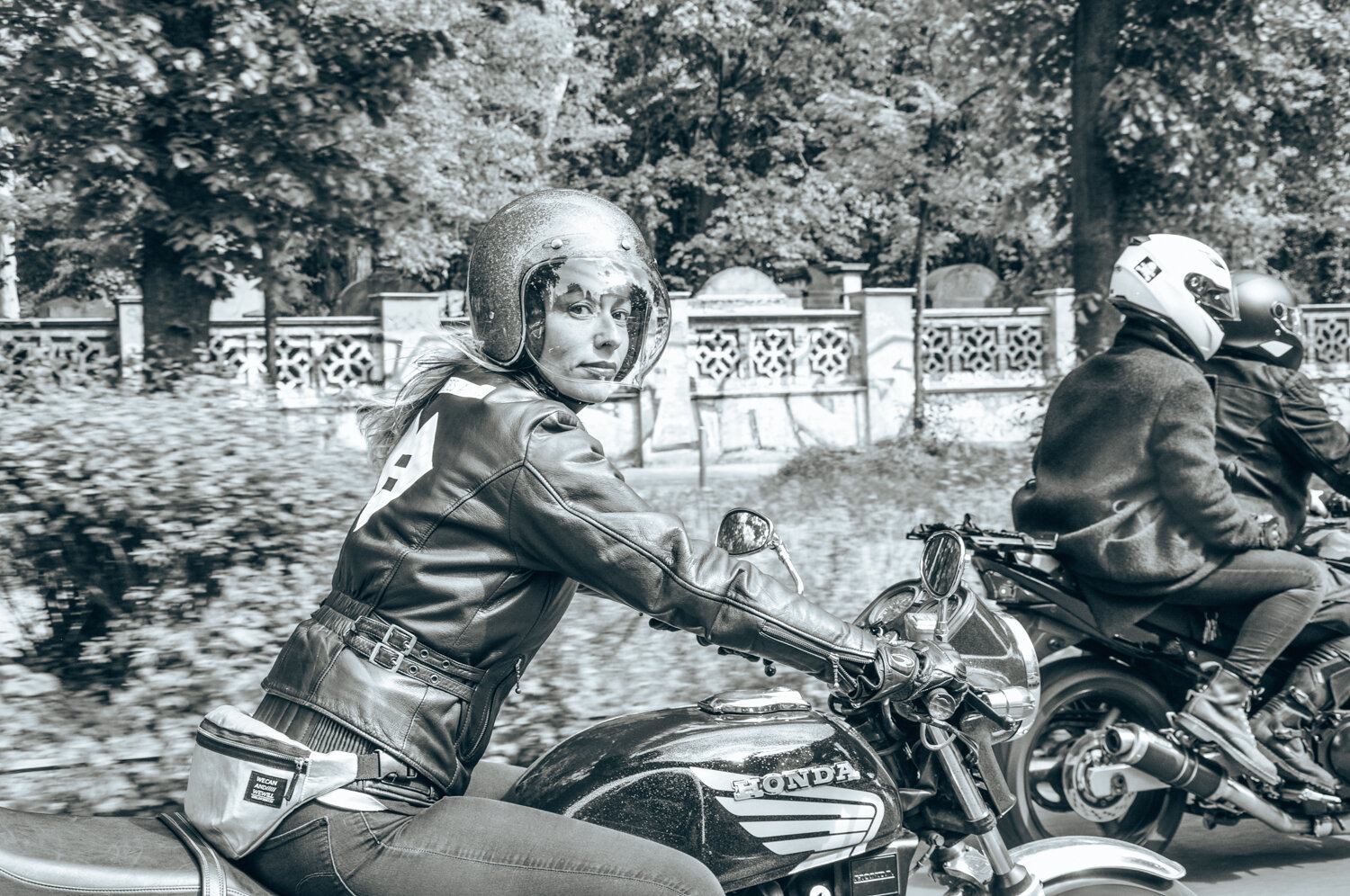
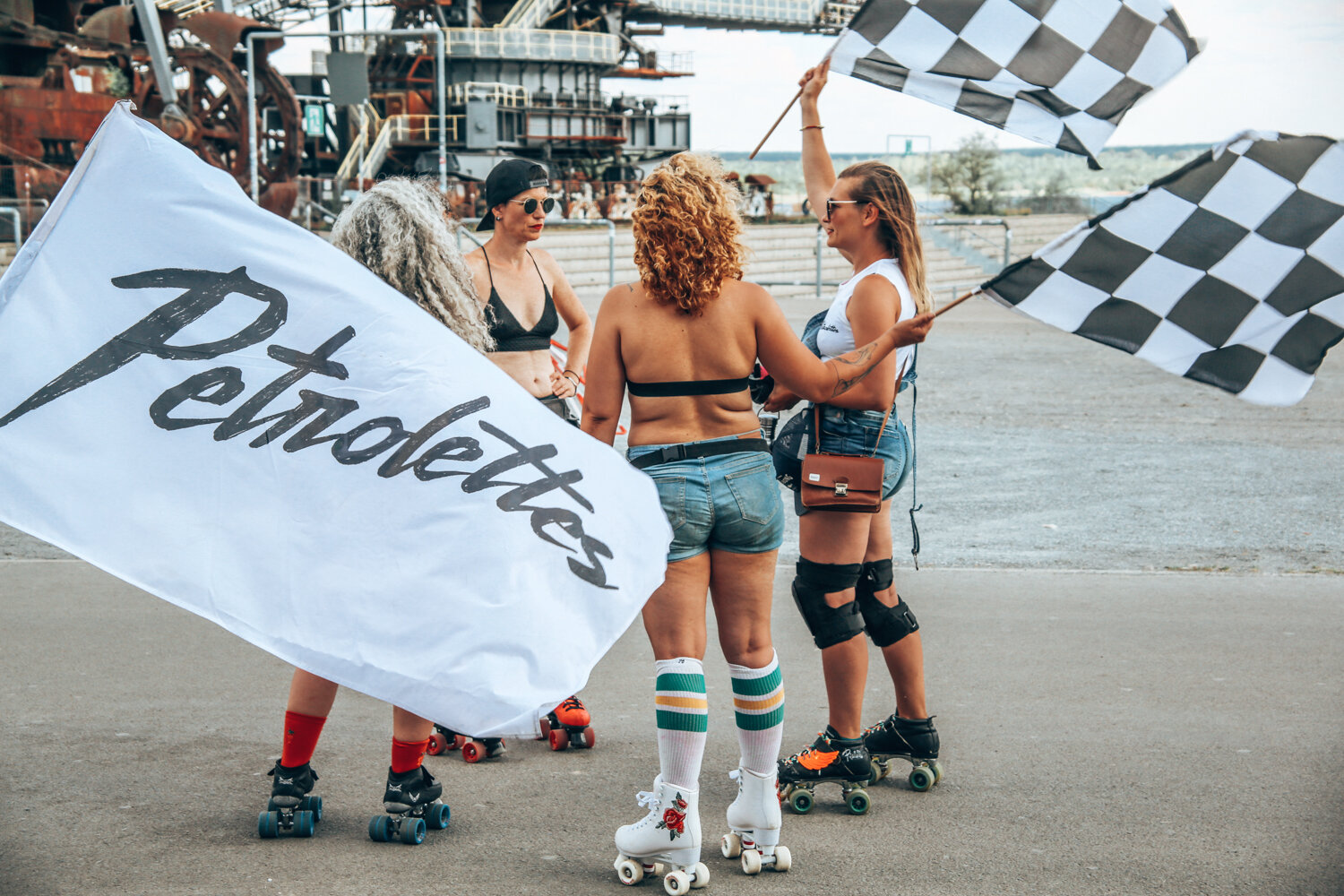



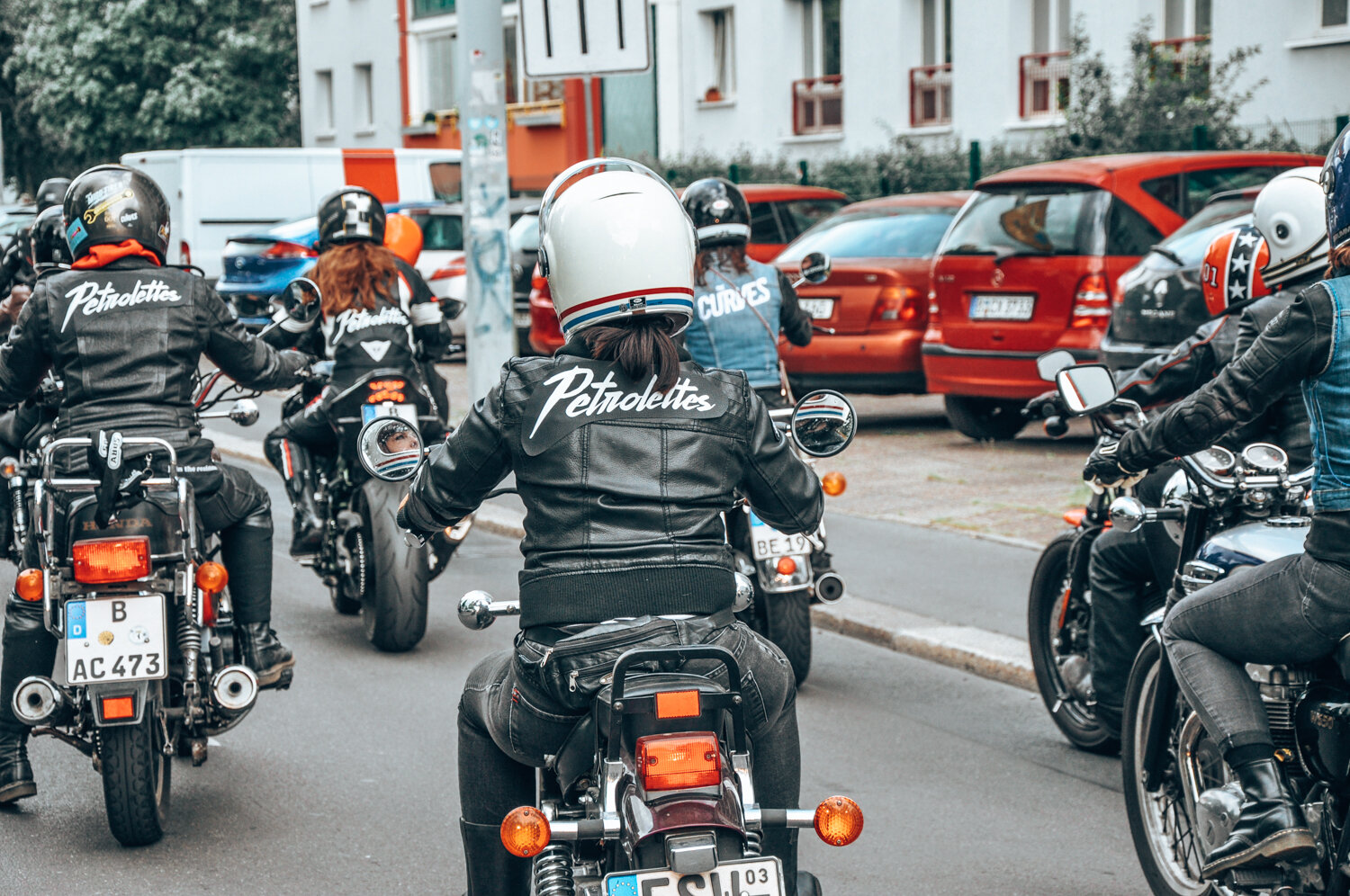
Alice Connew’s new photographic series Petrolettes was taken in and around Berlin: on the first International Female Ride Day and then at Petrolettes, Europe’s annual women-only motorcycle festival, held over three days in 2019. While Alice isn’t a motorcycle rider herself yet, these vibrant photographs capture the camaraderie, adventurous spirit and liberating fun that emerges when women come together through a shared love of motorbikes.
As the proud owner of a Honda GB400, I recognize in these images the petrol fumes, engine revving and thrill of acceleration that makes me love riding, as well as the feeling that you’re somehow rupturing the patriarchy by doing so. In this male-dominated industry, simply riding a bike can be seen as rebellious–but riding in a gang with hundreds of other women is a powerful and intimidating statement. Alice shows us an insider view of this rising subculture that is about empowerment, claiming space, tackling stereotypes and the ongoing challenges of representation.
Women bikers come from many different walks of life, from nurses to designers to accountants, and a range of ages, both young and old. The works in this series include casual details of the femininity that some women bring to the allegedly masculine activity of riding. We see the use of the rearview mirror for application of red lipstick, riders with long hair and manicured fingernails, juxtaposed with the supposed manliness of motorbikes, tools and machines. However, we also see a woman crouching beside her bike, checking the oil or undertaking maintenance of some kind, reinforcing the diversity of this group. Incidental moments like this allow the series to describe various aspects of the scene and to subtly reveal the flexibility of gender.
A couple of the photographs use as a backdrop the rusting remnants of industry. For example, a line of bikes are shown parked up under a massive bucket wheel excavator that sits stationary and defunct at Ferropolis, the city of iron, an open-air museum. Part of the landscape in the outskirts of Berlin, it implies a bygone era, an extractive production method and economic system as outmoded as the social ideals of yesteryear, when the place of women was thought to be at home. Other images are taken of urban scenes, bikers cruising through the city streets; exhibiting a takeover of the public domain and a reclamation of not just how, but also where women should be.
In one work the perspective is shot looking up the steps of the Deutscher Dom in Berlin’s Gendarmenmarkt, once a church, now a museum, where a robed saint on the façade prominently raises his hand and eyes to the heavens. A throng of leather-clad women form a crowd on the steps, also with their hands raised, one clearly pulling the devils horns symbol. They face a woman with a megaphone who is delivering a speech I assume clashes with the religious icon behind. I imagine it’s a rallying cry, a call to arms to disregard social norms and propriety. This photograph documents her voice, and so speaks back to art’s history of religious iconography and patriarchal storytelling.
These women are fashionable and sexy in their leathers. Yet they do not conform to the usual pictures of women on bikes, a genre where women are shown in skimpy costumes and positioned to suggest it’s not the bike that they are keen to take out for a spin. Garage pin up posters or calendar shots, are intended to excite the sexualized male gaze, depicting women as passive, beautiful objects to be owned just like the bike that they sit astride. In comparison, Alice’s Petrolettes photographs are full of action, good times and solidarity.
Instagram influencers, such as @actuallyitsaxel, are also changing perceptions, endorsed by companies who realise there is a growing market of women riders. My Instagram feed features women riding solo or in groups, from all around the United States, Japan, Germany, Italy and the UK. They still share pictures of their bodies on bikes, but have personal control and offer a very different point of view. These women are proud of conquering a difficult dirt track, biking across a continent, fixing something themselves, or doing burn outs with pink smoke pouring from their exhaust. Photography is used strategically online to show the growing participation of women in the motorcycle world. Similarly, Alice’s photographs reveal a bunch of individuals whose personality is not tied to gender, or even motorbikes, and instead extend a sense of humanity.
A few images show the races at Petrolettes, riders lining up at the start line surrounded and assisted by those on roller skates. There’s laughter amongst the competitors, and a sense of warmth, care and togetherness. The image I find most engaging from the series is of a woman on a Honda wearing a glittery bubble helmet, Eileen. She looks directly at the camera, her calm inner confidence edging the corner of her mouth into a smile while her eyes communicate ‘don’t mess with me’. Even though she lives on the other side of the world and I know nothing more about her than that she also rides a Honda, I can identify with her as a complex and curious person.
Alice’s images call to mind the photographs of New Zealand artist Alexis Hunter (1948-2014) in The Object Series (1970). Alexis’ work was often a critique of the representation of women in advertising, and her images are erotically charged. In particular, there’s a closely cropped, black and white shot of a male torso and another of a boot on the foot pedal of a motorbike. With her strident feminist stance and concerns around gender and sexuality, Alexis seems the logical precedent for these works taken by Alice some 50 years on, even though the context has changed remarkably.
The motorbikes these women ride are both a source of freedom and dangerous. Likewise, Alice’s photographs make tangible a contemporary view of women that embraces difference and diversity, with a compelling edge. They disrupt assumptions about the representation of women, or gender in general, and capture what it means to come together and find unity through shared interests or concerns, instead of more simplistic forms of identity.
Melanie Oliver is a curator at Christchurch Art Gallery Te Puna o Waiwhetū. She is also a PhD candidate in curatorial practice at Monash University.
This portfolio is supported by funding from Creative New Zealand.

